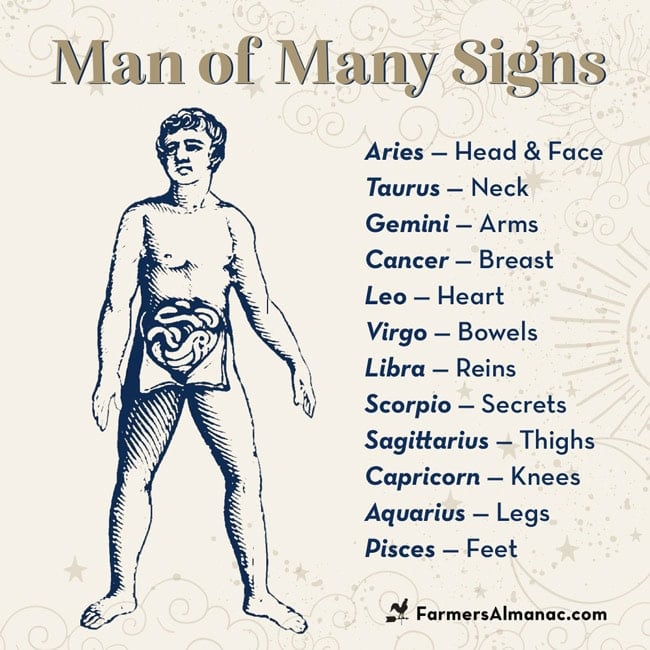Full Moon Rituals: Using The Moon For Personal Growth

This comprehensive guide dives into the world of full Moon rituals, empowering you to harness the Moon’s potent energy for personal growth and well-being. Learn how to make Moon Water and so much more! See Full Moon Calendar.
Demystifying Full Moon Rituals
The full Moon, a breathtaking celestial spectacle, occurs every month (roughly every 29.5 days). During this phase, the Earth, Sun, and Moon form a near-straight line, bathing the lunar surface in sunlight and creating the full Moon we see.
While the term “ritual” might conjure up images of secrecy or extravagance, full Moon rituals are simply intentional practices designed to connect with the Moon’s unique energy. They can be as simple as journaling under the moonlight or taking a relaxing bath infused with herbs.
Interestingly, some studies suggest a correlation between full Moons and sleep disturbances due to the Moon’s gravitational pull on Earth’s tides. However, full Moon rituals can be a powerful tool to navigate these potential sleep disruptions and cultivate a sense of calm.
What To Do On The Full Moon
Full Moon rituals encompass a diverse range of practices, allowing you to find what resonates most with you. Here are some popular examples:
- Ground Yourself: The time leading up to a full Moon can often make people moody, sensitive, and fatigued. It is helpful to use this time to pause and ask yourself how you are feeling physically and mentally? How are your relationships and career? Being in tune with your feelings will help you stay grounded and help you efficiently make positive changes. The full Moon is the perfect time to look inward and recalibrate.
- Connect with Nature: Spend time outdoors, basking in the moonlight and connecting with the Earth’s natural rhythms. Take a moment to stop and smell the roses—literally. Watch the trees as they sway in the breeze and breathe fresh air. If you live near water, go to it and watch it flow. Time spent in nature has a healing effect
- Breathe Deeply: The pull of the full Moon can often trigger strong emotions and uncomfortable sensations. Engaging in deep breathing can allow you to unfurl these emotions. Turn off your phone and find a quiet place where you can sit and pay attention to the rising and falling of your abdomen as you inhale and exhale. It sometimes helps to place your hand on your heart and belly and take a few deep breaths. Repeat as often as you like to help you relax and ground your body.
- Try Meditating: Sit with your thoughts and take a moment to reflect. Oftentimes, it is only in stillness that we can fully see what is happening inside and around us. Celebrate your wins—small or large from the last couple weeks. Then do your best to “let it all go” and release any hang-ups. Techniques like mindfulness meditation or guided visualizations specifically focused on the full Moon’s influence can be particularly powerful. Need some help settling down and meditating? There are many guided meditations online you can tune in to for some guidance.
- Write What You Feel: Pour your thoughts and emotions onto paper, seeking clarity and releasing negativity. Expressing through writing can help you identify what is weighing you down, (a habit, a situation, a person, etc.) and can give you more clarity than simply thinking about it.
- Make a Bonfire: Bonfires are prehistoric practice. Many cultures give thanks and set intentions with ceremonial fires. You may choose to safely burn an item (an object or a written note) as a symbolic expression for letting an aspect go. Doing so creates space for something new and wonderful to come into your life.
- Give thanks: Recognizing what you presently have has a tremendous positive effect. Celebrating and being thankful is amplified at the full Moon, so lean into it!
- Bang a Drum: Sing or play a musical instrument. Don’t know how? Bang a drum! The most important thing you can do during a full Moon is release any pent-up energy. Heck, howl at the Moon if you’re feeling wild.
- Eat a Healthy Meal: Just as it is important to cleanse your physical and mental space, eating a healthy meal during the full Moon helps to cleanse your body. Choose fresh, unprocessed ingredients, with lots of vegetables and grains. In the summer, fresh, raw locally grown fruits and vegetables can be cleansing. In the winter, soups, stews, or curries can be nourishing and deeply comforting.
- Dance it Out: Dancing is a natural and easy way to unwind during a full Moon! Full Moons are about letting things go. Go ahead and dance it out! Dress up, or dance right in your PJs. Get that body moving and expel some stored-up energy. The tradition of full Moon dancing actually dates back to ancient times, and many cultures throughout the world are known to gather in circles and dance under the full Moon.
- Take a Bath: There are many benefits of taking a cleansing bath as part of your full Moon ritual. Use this time to relax, meditate, and center yourself, focusing on your breath. When you let the water out of the tub, imagine you are letting go of whatever is no longer useful to you—right down the drain. If you’re not a bath person, take a shower. Focus on washing away the dirt, negative energy, and things you have collected throughout the day (or month), and imagine the water healing you as it rolls off your body. Related product: Shower Steamers
- Make Moon Water: “Moon Water” is water infused with the light of the full Moon. Learn how to make Moon Water—instructions below!
- Charge Your Crystals: Harness the power of crystals believed to be amplified under the full Moon’s light. Start with Moonstone or quartz. Learn more about Birthstones and crystals with deep histories and folklore associations.
- Rest and Relax: After unwinding, do you yourself a favor and get some good rest. Having trouble sleeping? Try Pink Noise—Learn what that is and the benefits!
RELATED PRODUCTS: Moonstone Necklace

How To Make “Moon Water”
“Moon water”—water charged under the full Moon’s light—is a popular practice. Here’s a simple guide to creating your own:
- Gather your tools: Choose a clean glass jar and filtered water.
- Set your intention: As you fill the jar, visualize the qualities you wish to infuse in the water.
- Charge under the Moon: Place the jar outdoors under the full Moon’s light, or indoors bathed in moonlight streaming through a window. Let it sit overnight.
- Enjoy! Use Moon Water for various purposes, such as watering plants, adding to baths, or simply drinking with intention.
Any questions? Contact [email protected]
A Full Moon for Every Part Of Your Body!
The Farmers’ Almanac is famous for sharing traditional and alternative names for each full Moon, but did you know that each full Moon is associated with a different part of your body, according to the zodiac? Why not celebrate it? This ancient wisdom provides a unique opportunity for self-care each month. For instance, when the full Moon is in the zodiac sign Taurus the corresponding body part is your neck. For this reason you may want to support this part of your body with a warm shower, light stretching, or a warm compress. (See a full list of zodiac signs and suggestions below.)
The Famers’ Almanac has inspired readers to live a better life—gardening, fishing, and performing routine household tasks—according to the Moon and zodiac signs for over two hundred years. We recommend that you use the same principals and guidance for self-care and personal growth.
Important Note: The full Moon’s placement in the zodiac is always opposite the Sun’s placement. For instance, “Aries season” runs from March 21-April 19. So, when the full Moon appears during this time frame it will occur in the sign of Libra. Learn more about this.
See the next full Moon’s name and zodiac sign here.
The zodiac starts with your head with Aries and ends at your feet with Pisces:
- Aries – Head: Pursue an intellectual activities like reading, learning a new skill, or engaging in stimulating conversation. A full Moon in Aries is a fantastic time for a scalp massage or a facial! If you don’t already have a skincare routine in place, start one that includes cleansing, moisturizing, and sun protection. Also, express yourself through your hairstyle, makeup (if you use it), or accessories. Prioritize a good night’s sleep.
- Taurus – Neck: Stress often accumulates in the neck and shoulders. Reduce tension in this area of your body by taking a warm shower or bath. Light stretching may also help. Be sure that your computer monitor is ergonomically placed at eye level. Consider investing in a more comfortable pillow.
- Gemini – Arms: Dancing is a great way to unwind tension in your arms during a full Moon in Gemini! Also, consider a physical activity like pickleball or tennis. Don’t forget to stretch your arms after exercise to increase your flexibility and range of motion. Give yourself a bit of TLC with a gentle self-massage. Use your hands to gently knead your forearms, biceps, triceps, and shoulders.
- Cancer – Chest: Give special attention to your chest and lungs. A full Moon in Cancer is a great time for deep breathing techniques. Learn the Best Days to quit smoking. Also, watch the way you are sitting. Poor posture may contribute to discomfort in the chest.
- Leo – Heart: When was the last time you did some cardio? We don’t suggest running a marathon on a full Moon in Leo, but consider a heart-healthy meal. Relaxation techniques such as mindfulness, journaling, and being in nature will support your mental and emotional well-being, which is connected with the heart.
- Virgo – Bowels: Take a relaxing bath. Really nurture yourself. Pay extra attention to your digestive health. Are you getting enough fiber in your diet? How about probiotics? Limit processed foods. Drink plenty of water and consider nutritional supplements that may support your goals.

- Libra – Kidneys (and lower back): This area of the body is historically associated with passion and emotion. During a full Moon in Libra you may consider methods of balancing your emotions. Otherwise, provide support for your lower back. Pay attention to your posture. Stay hydrated. Deep breathing and meditation may help reduce tension.
- Scorpio – Secrets (and reproductive organs): A full Moon in Scorpio may involve emotional burdens related to deep secrets. This is a great time for journaling. Speak with a friend or therapist to process your feelings and gain perspective. If a secret is causing you distress, consider if there are ways to address it. Self-care can involve being honest with yourself and others when possible. This is also a potent time to practice self-acceptance and appreciate your body’s unique qualities.
- Sagittarius – Thighs: Be adventurous! Go hiking on trails in nature. When you get back, do some stretching and self-massage for flexibility, both physically and metaphorically. This openness will help you explore new experiences and perspectives.

- Capricorn – Knees: Put on a comfy pair of shoes with good arch support! Say “no” to avoid burnout. Let go of pent-up energy with yoga or tai chi, which combines movement with mindfulness, promoting relaxation and improving knee health. Rather take it easy? Do light leg stretches on the floor.
- Aquarius – Legs: Lie back, relax, and put your feet up! This will reduce swelling in your feet and ankles and provide overall comfort for your legs. Feeling more active? If the weather is nice, go for a bike ride! Swim, dance, or take a moonlight stroll.
- Pisces – Feet: This is an ideal time for a relaxing foot bath and—if you’re feeling glamorous—a pedicure. A Pisces full Moon only happens once a year, so indulge! Remember: self-care is important and not selfish.
Bookmark our Zodiac Calendar and follow the Moon through the zodiac over the course of the year! (Just match the date of the Full Moon with the sign listed on this page. )
Full Moon FAQs: Unveiling the Mysteries
This section addresses questions you might have about full Moons and rituals.
What is the symbolic difference between the full Moon and the new Moon?
New Moons symbolize new beginnings, while full Moons are associated with culmination, release, and heightened emotions. Moon Meditations – For All Phases!
- Intention Setting: Both full and new Moons are powerful for setting intentions. Full Moons are ideal for intentions related to releasing, culmination, or achieving emotional clarity. New Moons, on the other hand, favor intentions for new beginnings, growth, or attracting something new.
- Launching New Projects: While the full Moon signifies culmination and completion, it’s not inherently bad for new beginnings. You may use the full Moon’s energy to gather inspiration or finalize preparations before launching a project during the waxing Moon phase (leading to the full Moon).
How do you attract good luck during a full Moon?
Gratitude rituals expressing appreciation for what you already have are a great way to attract more luck during a full Moon. Additionally, releasing negativity and limiting beliefs can create space for positive energy and luck to flow in.
Related product: Good Luck Bracelet
What gods and goddesses are associated with the Moon?
Full Moons have held significance in various cultures for millennia, with deities like Luna (Roman), Selene (Greek), and Thoth (Egyptian) linked to the Moon.
How does modern interpretation differ from ancient practices?
Modern interpretations often focus on personal well-being, while ancient practices might have been more agricultural or community-oriented.
Does science support full Moon rituals?
While scientific evidence directly linking full Moon rituals to specific outcomes is limited, the power of intention and ritual can be undeniable. Focusing on self-care practices during a full Moon may lead to positive emotional and physical benefits.
Do full Moons change human behavior?
Scientific studies haven’t found a precise link between full Moons and increased crime or erratic behavior. Though many Farmers’ Almanac readers, especially those who work in hospitals, report an increase in babies being born and patients being admitted to the emergency room. Sleep disturbances might be a factor, but the effect is likely minimal.
Deepening Your Connection
There’s more to full Moon rituals than meets the eye. Let’s delve into some of the intricacies you might encounter:
Moonlight Bathing vs. Moon Showers
While both practices involve soaking under the moonlight, there’s a subtle difference. Bathing in the moonlight doesn’t require water—only the subtle glow of the Moon. Whereas Moon showers involve actually bathing outdoors under the full Moon’s light, often seen as a deeply cleansing and emotionally balancing experience. A relaxing full Moon bath with essential oils or calming herbs may achieve similar results!
Full Moon Rituals Around the World
Across the globe, cultures have developed unique ways to celebrate and acknowledge the full Moon. Here are a few examples:
- Asia: During the Mid-Autumn Festival, people gather under the full Moon to share Mooncakes, celebrate family unity, and give thanks for the harvest.
- India: Hindus celebrate Purnima, a time for prayer, fasting, and offerings to deities associated with the Moon.
- Native American Cultures: Many tribes have Moon dances or ceremonies associated with specific full Moons, often focused on gratitude, storytelling, and connecting with nature’s cycles. Learn more about Native American practices during a full Moon.
Colors, Symbols, and Full Moon Practices
Colors and symbols can add depth to your full Moon rituals. Silver and white, traditionally associated with the Moon, can represent purity and intuition. You might incorporate them through candles, crystals, or clothing.
Specific symbols can also hold meaning. For instance, a seashell might represent the Moon’s influence on tides, while a lotus flower could symbolize spiritual growth.
Solitary vs. Group Rituals
Full Moon rituals can be as fulfilling practiced alone or with others. Solitary practice allows for deep introspection and personalized intention setting. Group rituals, on the other hand, foster a sense of community and shared experience.
Ultimately, the choice depends on your comfort level and desired outcome.
Astrology offers another layer of personalization. Understanding your natal chart, the planetary positions at your birth, can help you tailor rituals to specific areas of your life influenced by the full Moon’s placement. Learn more about Full Moon Horoscopes!
Full Moon Rituals and Your Local Landscape
Full Moon rituals can be adapted to your geographic location. Consider incorporating local flora or fauna into your practices. For example, burning sage (ethically sourced) is a common cleansing practice, but depending on your location, other cleansing herbs like lavender or mugwort might be more readily available.
Public Spaces and Environmental Consciousness
Sustainability can be woven into your full Moon rituals. Use reusable materials like glass jars for Moon water, opt for natural candles made with soy wax or beeswax, and hold rituals in natural settings where minimal waste is produced.
When practicing full Moon rituals in public spaces, be respectful of the environment and others. Keep noise levels down, avoid disturbing wildlife, and leave no trace behind.
Life Events and Full Moon Rituals
Full Moon rituals can be powerful tools for marking significant transitions. During a full Moon coinciding with a wedding, intentions for a harmonious union can be set. A full Moon near a job change might be a time to focus on career aspirations.
Planning a wedding? Check our long-range weather forecast for your region!
Full Moon vs. Best Days Calendars
“Best Days” calendars often incorporate astrological influences beyond just the full Moon. They consider the Moon’s phase, its placement in the zodiac and other factors as they impact on specific activities.
A Final Thought
Full Moon rituals offer a way to connect with the natural world, tap into lunar energy, and cultivate a sense of peace and purpose. There are no right or wrong ways to participate. Find what feels most meaningful to you.
Remember, full Moon rituals are about personal empowerment and connecting with the Moon’s energy. Let your intuition guide you and create practices that resonate with your own unique journey.
We’d love to hear about your experiences with full Moon rituals. Share your thoughts and questions in the comments below!
Join Our Discussion
Have you ever made Moon Water?
What is one thing that you learned from this article?
Let us know in the comments below!

Natalie LaVolpe
Natalie LaVolpe is a freelance writer and former special education teacher. She is dedicated to healthy living through body and mind. She currently resides on Long Island, New York, with her husband, children, and dog.

















A few months ago, I had a problem with my lover and we ended up breaking up. I was really heartbroken, but I’m so grateful to Dr. Tunde for giving me a reason to smile again. Thanks to his love spell, my partner and I are back together, and I couldn’t be happier. If you ever need his help, you can reach him through his via website: (tundelovespells.weebly.com)
This is the most wonderful thing I have ever experienced. I visited here online and I saw a marvelous testimony of Tracie Aldana from the United States on the forum about the good works of DR.tunde I never believed it, because I have never heard anything about such a miracle before. Nobody would have been able to convince me about it not until DR.tunde did a marvelous work for me that restored my marriage of 4 years by getting my husband back just as I read on the internet. I’m Carolina Peter. I was truly shocked when my husband knelt down pleading for forgiveness to accept him back. I am really short of words to use to show my appreciation to DR.tunde For his a God sent to me and my entire family for divine restoration of my marriage. Contact him now for any kind of help on his Email address: (babatundesolutioncentre1 @ gmail . com) if you seek his help you can also reach out to him via website: tundelovespells.weebly.com
I am almost positive that God wouldn’t mind me using what he created to be more mindful set my goals and intentions and live a happier healthy life. I will never understand such close-minded opinions.
I have off and on my whole life embraced the magnificent light of the moon. I have sang, danced, hiked, and yes, I have made moon water. Thanks for the reminder. Celebrate the moon everyone.
L
Thank you for sharing your experiences. We love the moon too!
Namaste
Beautiful post, for many reasons I have being away from my moon rituals, tonight I am ready to enjoy the wolf moon again. first I am going to clean my stones in spring water and left the full moon complete the ritual.
Some things on the list, I’ve done off and on since the 1960s and 1970s.
Great Tips. Happy mooning everyone✌???♀️?????
Great post Natalie! (by the way, I live on Long island too!) this gives me a list(I love lists) of things to do each and every full moon, which of course is every month! I like all 16 of these, cant wait until September’s Full Moon which is in a couple of days, 9/10/22! 🙂
Plz realize that there are many faiths and religions, none better than the other!